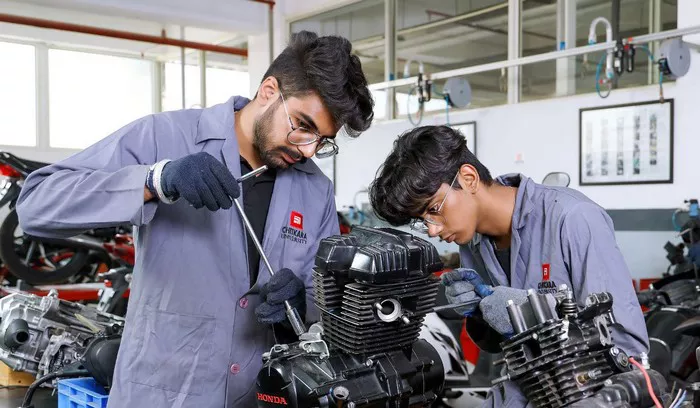China’s aeronautics sector has achieved a major technological milestone with the recent patent approval for a next-generation self-cooling turbine blade, a key advancement poised to enhance both military and civilian aircraft performance.
Granted in late April to the Beijing Institute of Aeronautical Materials under the Aero Engine Corporation of China (AECC), the patent describes a novel manufacturing process producing alloy turbine blades that withstand temperatures up to 15% higher than current models. This breakthrough promises significant gains in engine thrust, fuel efficiency, and durability.
AECC, at the forefront of China’s military jet engine development—including engines for the J-10CE fighter jets deployed by Pakistan’s military—and civilian engines like the CJ1000A and CJ2000, reinforces its dominance in high-performance propulsion technology with this innovation. The patent, co-developed with Handan Xinxing Special Steel Pipes Company of Hebei province, was initially filed in October and officially registered by the China National Intellectual Property Administration.
Turbine blades, crucial to modern jet engines, determine thrust, fuel economy, and operational reliability. Traditional blades deteriorate under intense heat, limiting engine capabilities. The newly patented blade overcomes this by embedding a copper-magnesium-steel composite through advanced thermo-mechanical processing, enabling sustained operation under extreme temperatures.
The patent details that this composite structure combines the heat resistance of steel with copper’s superior thermal conductivity, allowing for self-cooling properties. This method integrates electric pulse-assisted low-temperature deformation with heat-assisted high-temperature deformation to fuse metals into a robust, multi-layer composite. The manufacturing process involves inserting magnesium foil and copper rods into alloy plates, heating and electrically charging them in a vacuum to melt and bond components, followed by rolling and forging into blade form inside a sealed stainless steel shell filled with alloy powder.
This design not only extends engine lifespan but supports more demanding flight profiles, especially in combat scenarios. By enhancing existing alloys rather than creating entirely new materials, the approach reduces development time and cost.
Beyond immediate application in turbine blades, the innovation could integrate with advancements in combustion chambers and cooling systems, fueling China’s ambitions to lead next-generation aviation engine technology.
China’s progress toward engine self-reliance is underscored by the domestically produced WS-10B Taihang engine powering the J-10C fighter, which recently saw combat use in the India-Pakistan conflict, highlighting the strategic importance of reliable indigenous aerospace technology. Additionally, the J-20 stealth fighter now flies with the potent WS-15 engine, delivering 18.5 tonnes of thrust and enabling supersonic speeds beyond Mach 2. The upcoming carrier-based J-35 stealth fighter is expected to incorporate twin WS-19 engines, though details remain classified.
This turbine blade patent represents a significant step forward in China’s ongoing drive to push the limits of homegrown jet engine innovation, reinforcing its stature on the global aerospace stage.

